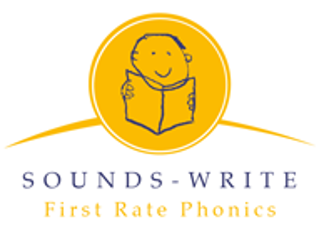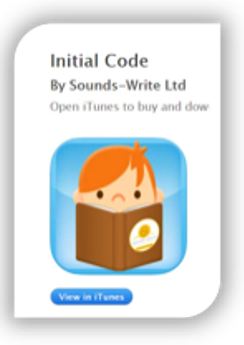Phonics
 We teach phonics through the Sounds-Write linguistic phonics approach.
We teach phonics through the Sounds-Write linguistic phonics approach.
The rationale for using this approach is that children are taught to understand the relationship between spoken language and written words. Teaching through this approach allows children to develop their
phonics knowledge of:
- Segmenting – the ability to pull apart the individual sounds in words e.g. dog = d - o - g
- Blending – the ability to push sounds together to build words e.g. c-a-t = cat
- Phoneme Manipulation – the ability to insert sounds into words and delete sounds from words. This skill is necessary to develop accuracy in reading and spelling.
We promote a logical approach to reading, and that all words can be decoded. We therefore do not teach ‘silent letters’ or ‘magic letters’. We focus primarily on sounds, and only introduce letter names once children have mastered the key skills needed to decode.
In Early Years Foundation Stage, children study the Initial Code. This teaches the concepts:
- One sound, one spelling, beginning with CVC words
- Double consonant spellings (bell,puff etc)
- Once children understand the concept of two letters representing one sound they are exposed to spellings with two different letters (e.g. ch in chin) - Once CVC words using known spellings are understood alternative words structures are introduced (e.g. cvcc, ccvc, vcc, ccvcc, cccvcc etc such as ‘end’, ‘frost’, ‘blinks’)
Free online courses: Help your child to read and write
This first course includes all the know-how and resources to get your child started, by introducing all the one-to-one spellings in the context of word reading, word building and sound-swap with simple CVC (consonant, vowel, consonant) words, as well as the skills they need to succeed.
There is an additional free course help parents and carers whose children are at home because of the COVIC 19 pandemic. The second course is available here:
This second course introduces words of a more complex structure (CVCC, CCVC, CCVCC), as well as some diagraphs (two letters, one sound) such as ss, ll, sh, ck and others.
Alex saying the sounds Sounds-Write Initial Code
Sound Swap
Here is an activity to support your child building words. Ask your child to listen for the sounds they can hear and build the word together.
If you child is unable to recognise the sound show them the sounds and reinforce its sound.
Supporting your child to read at home
Each week your child will receive two reading books that are part of our phonic scheme, Sounds Write. These books are linked to the unit that your child is currently learning in phonics, this is so that they may consolidate their learning.
This video, show you how to help your child to read a decodable story. We are reading 'Sam's pip' on of the stories for beginner readers in the Sounds-Write program.
Initial Code app
 If you have an iPad you can download the app linked to our phonics programme.
If you have an iPad you can download the app linked to our phonics programme.
It is called Initial Code, by Sounds-Write Ltd. There is a free version of the app with some sample lessons, and a full version for sale too.
The app offers a variety of activities to develop the skills of segmenting and blending, word reading and writing and some sentence reading and writing. The app has been designed to introduce the sound-spelling correspondences in the Initial Code of the Sounds-Write.
